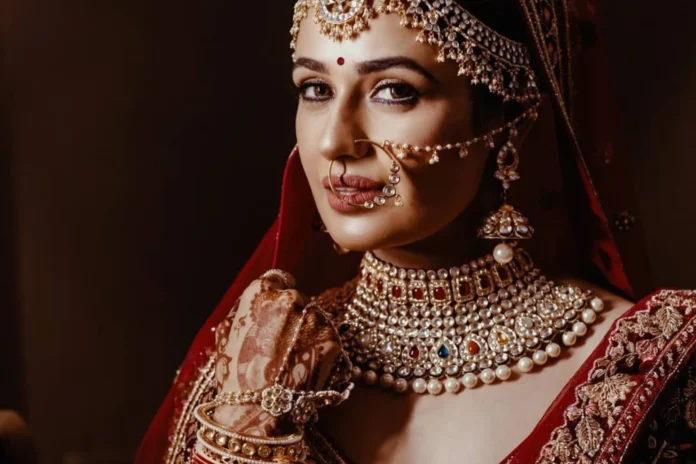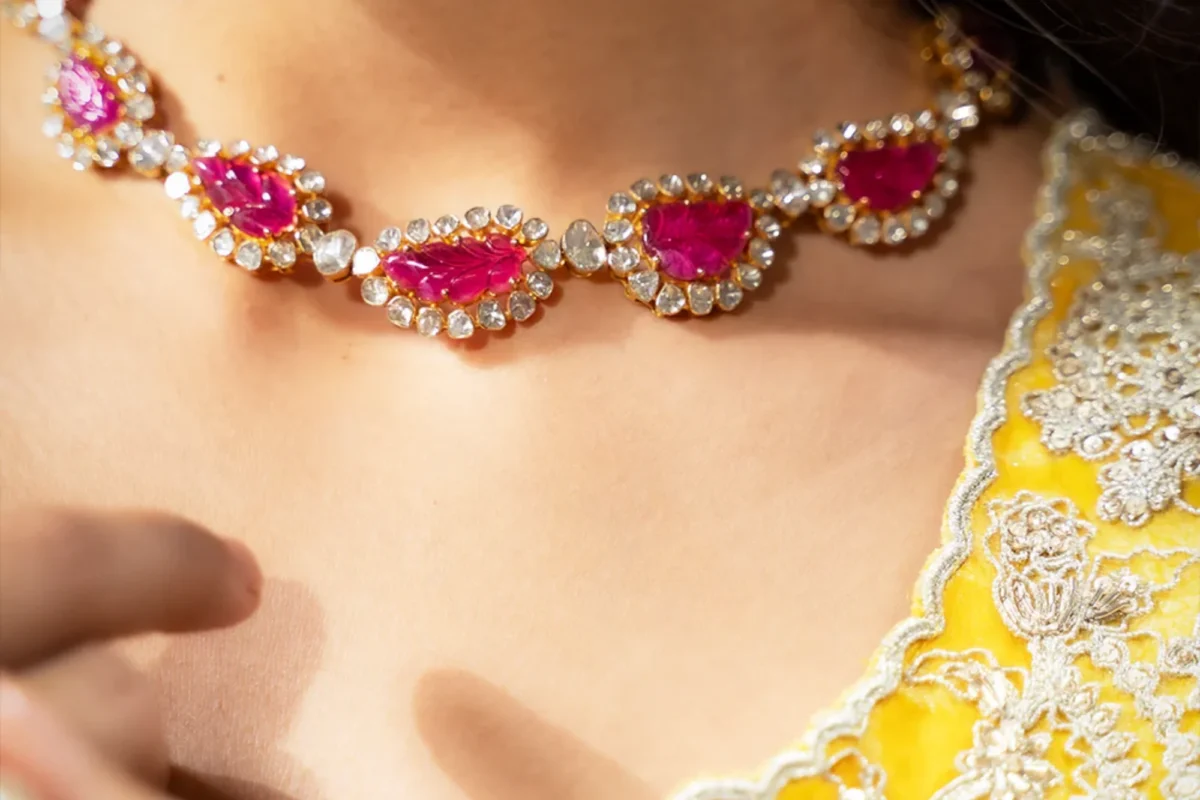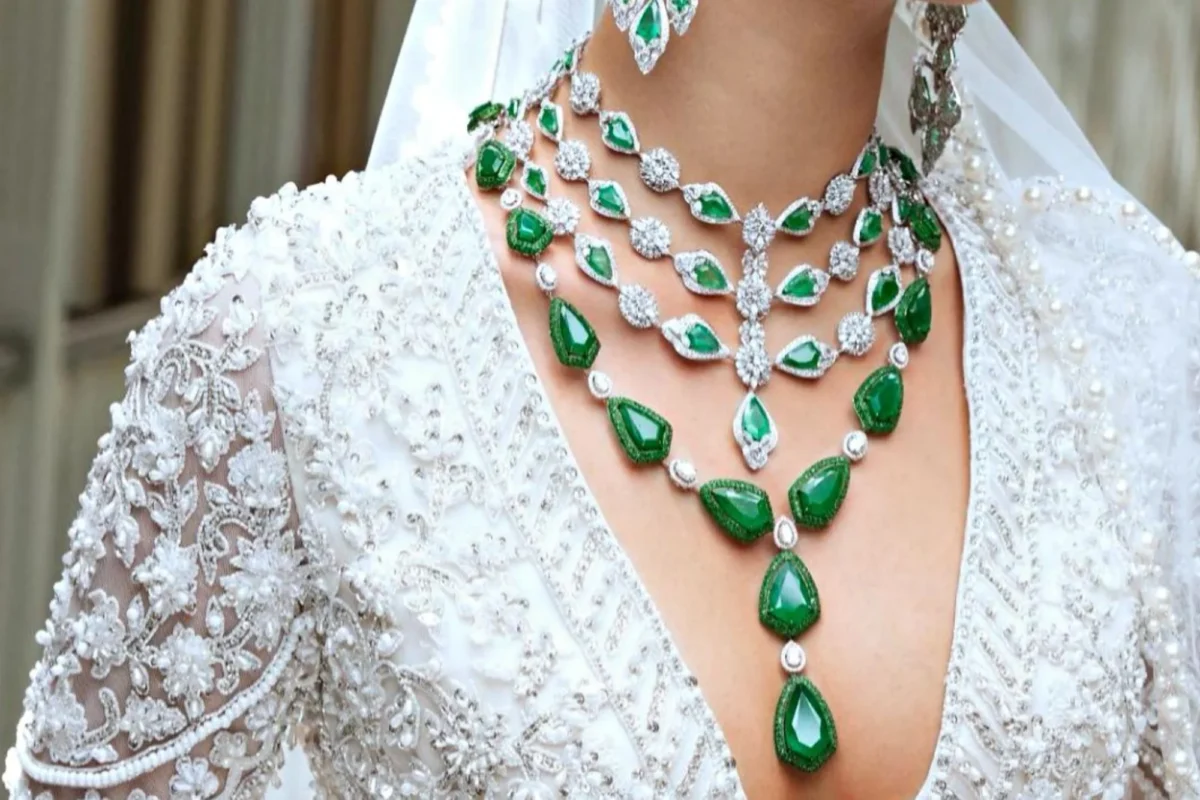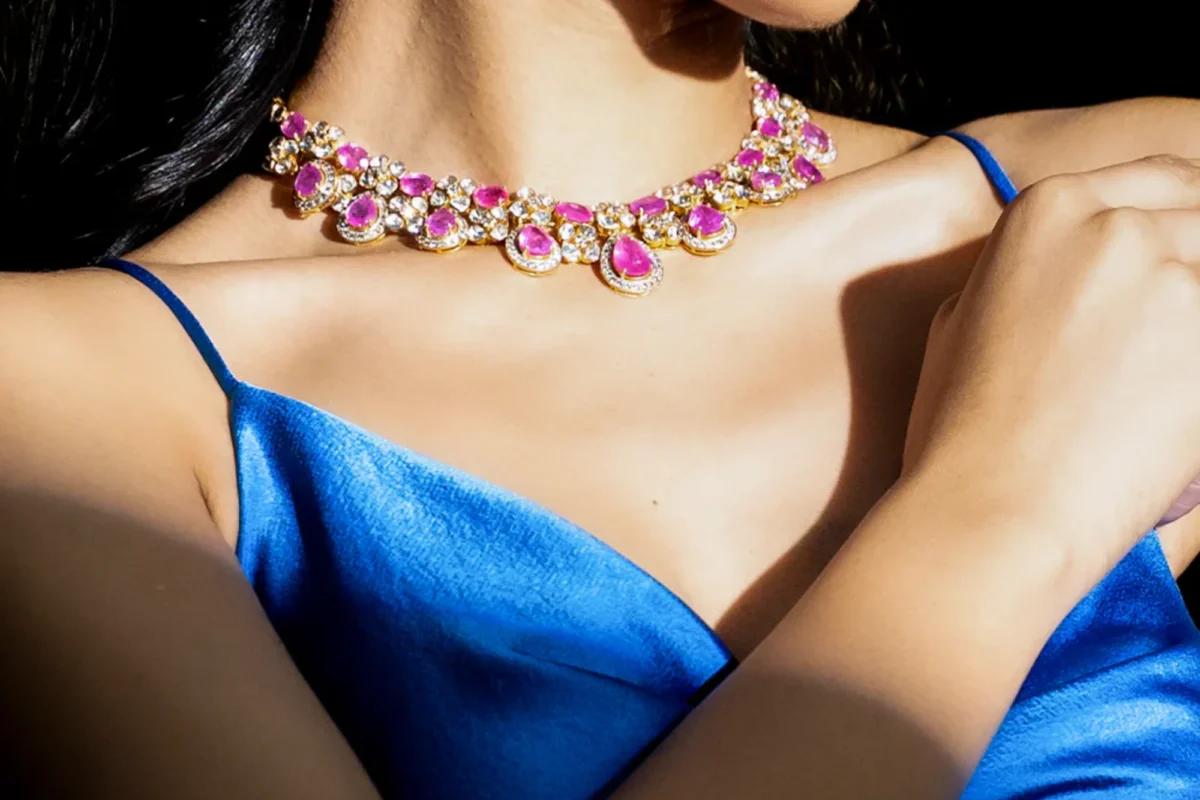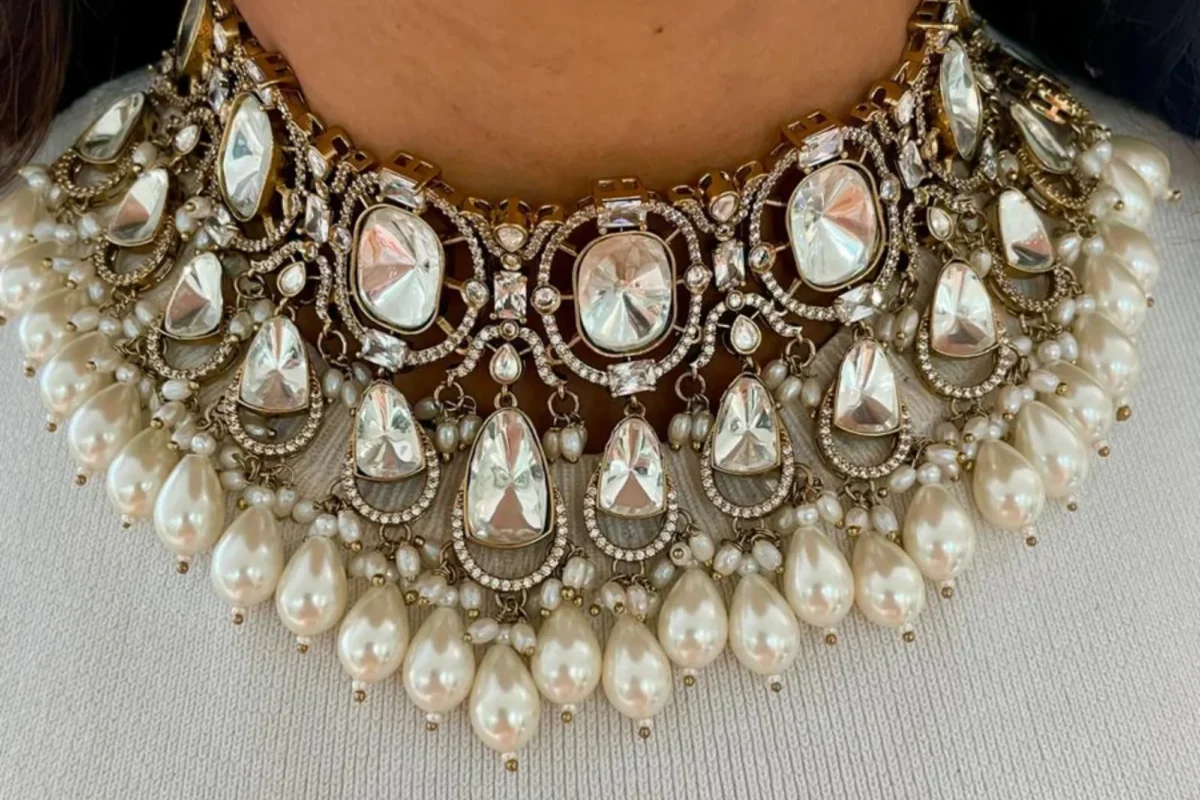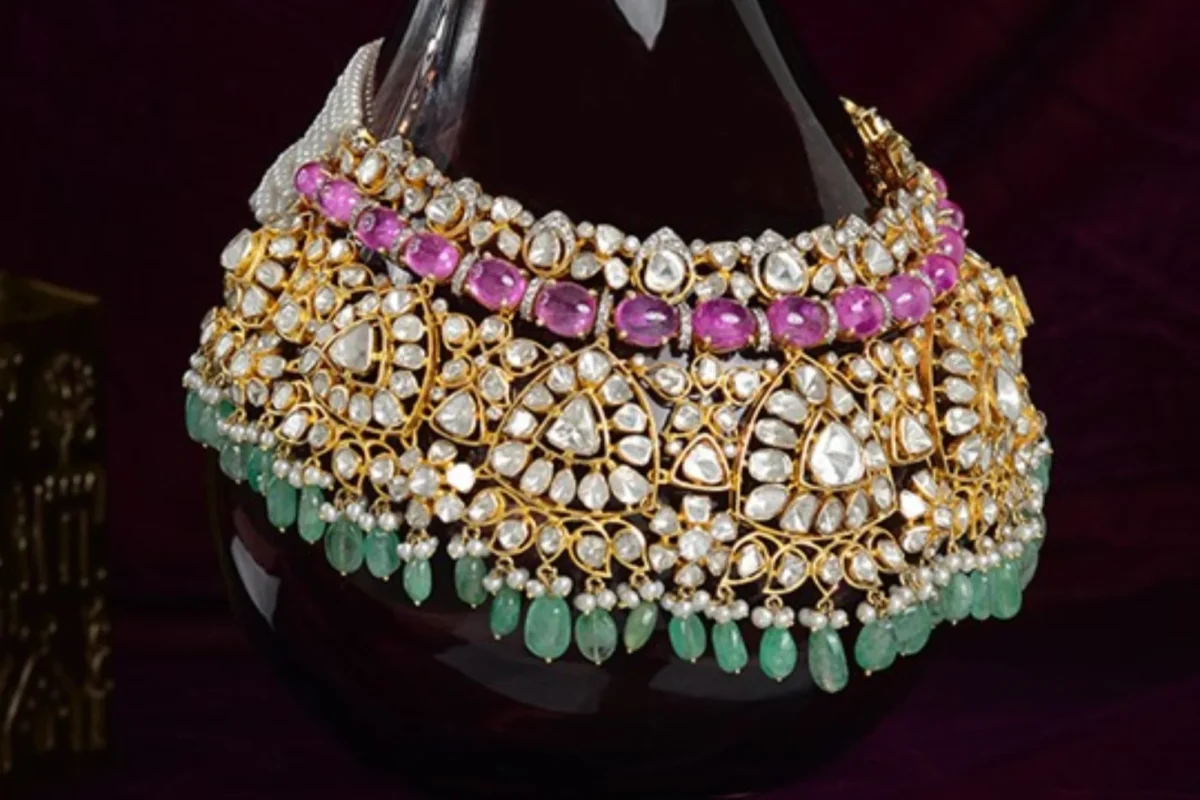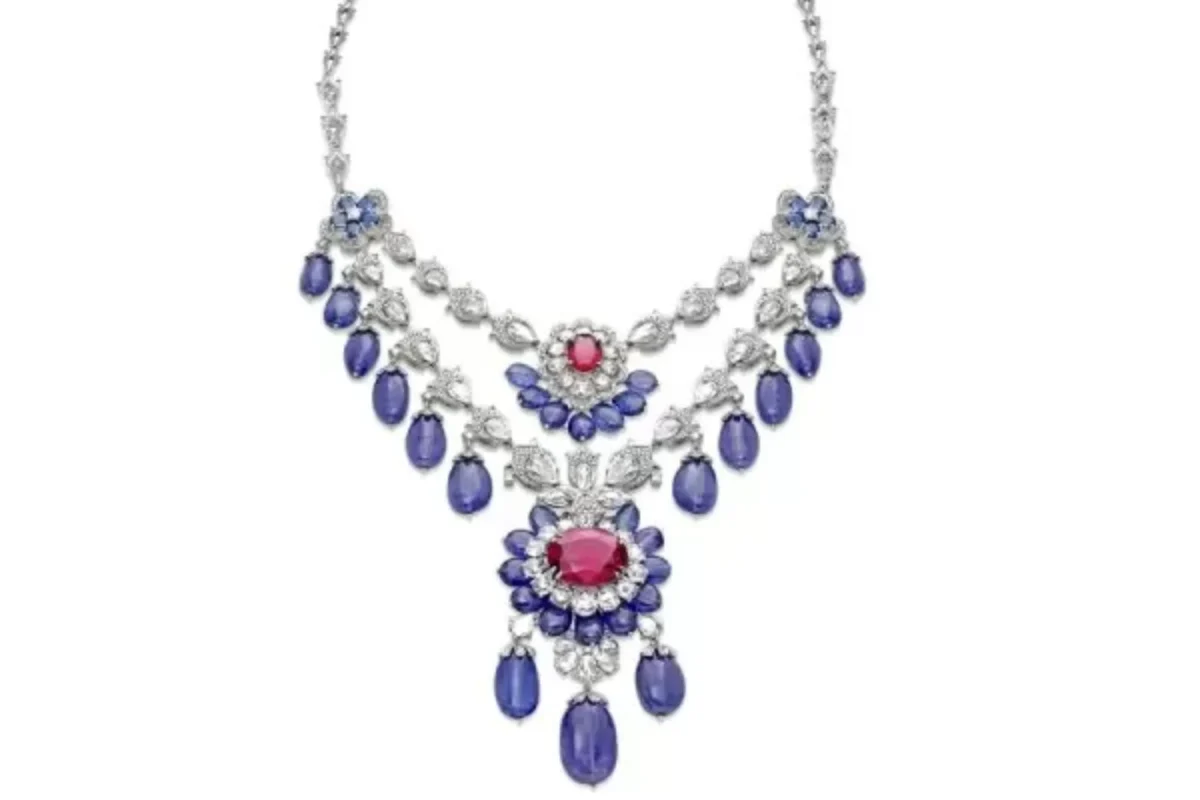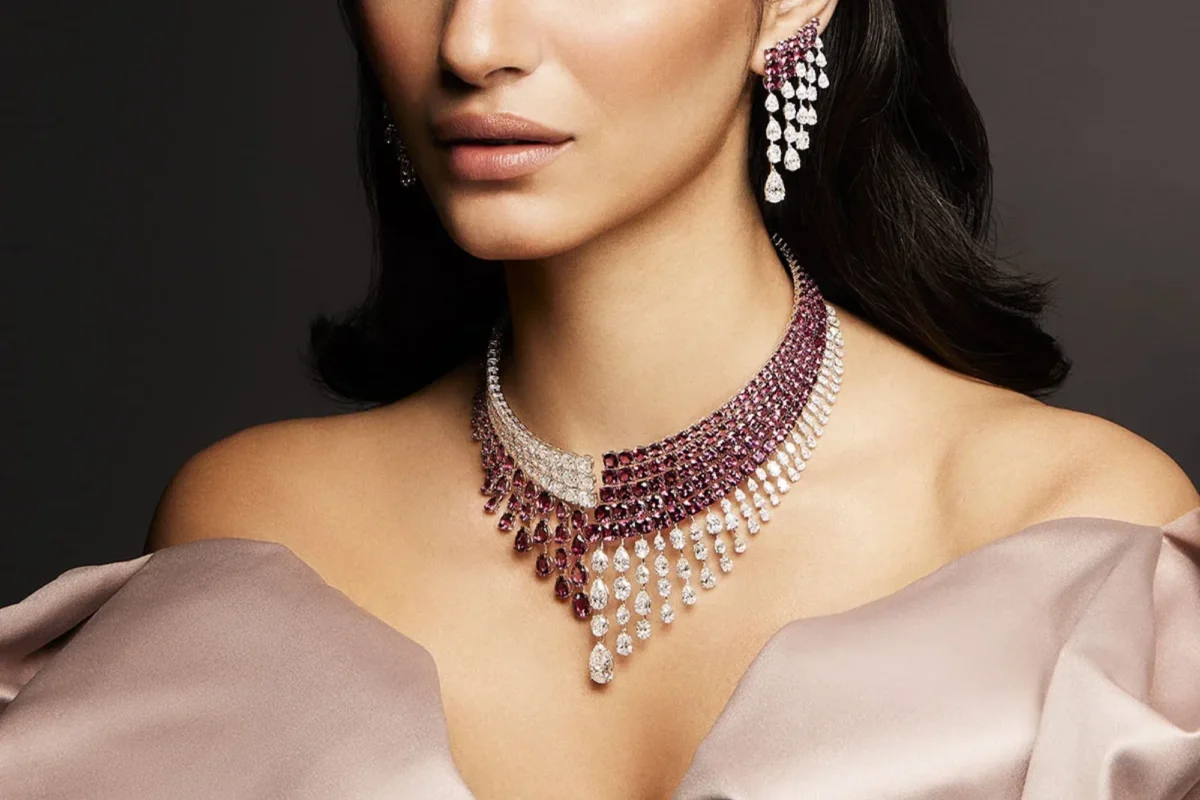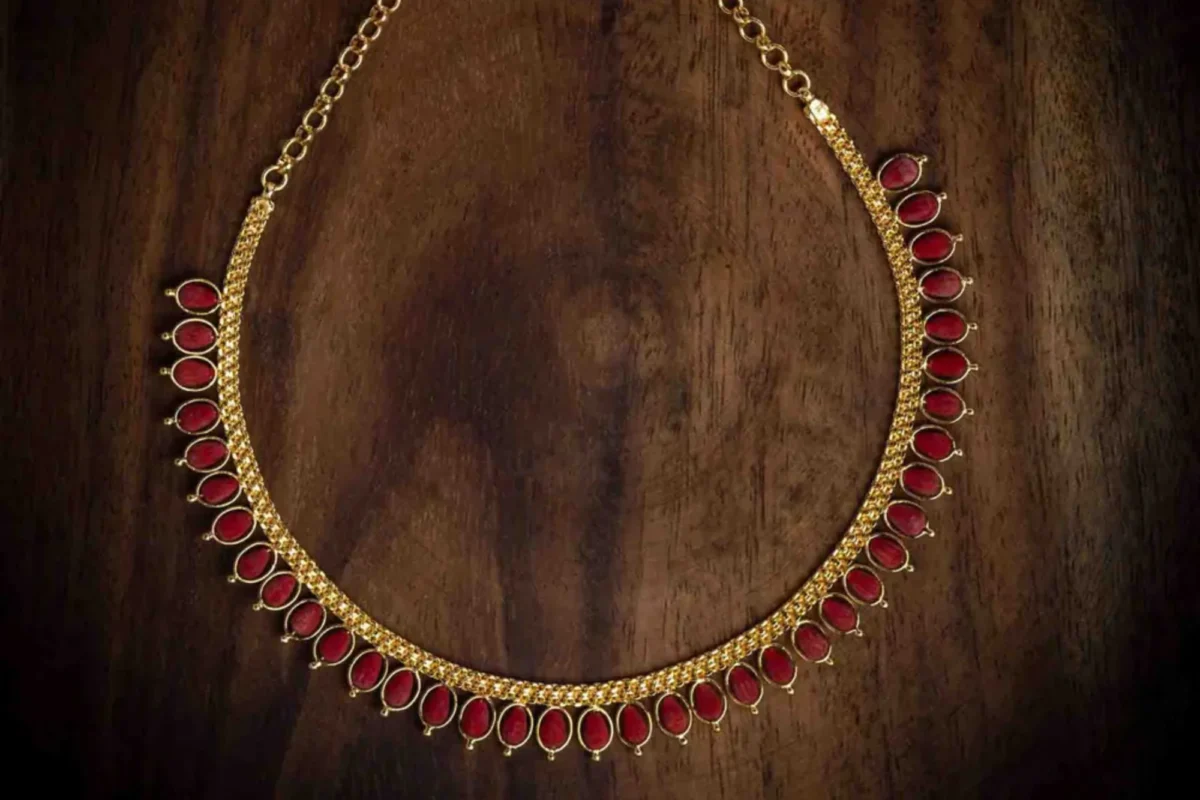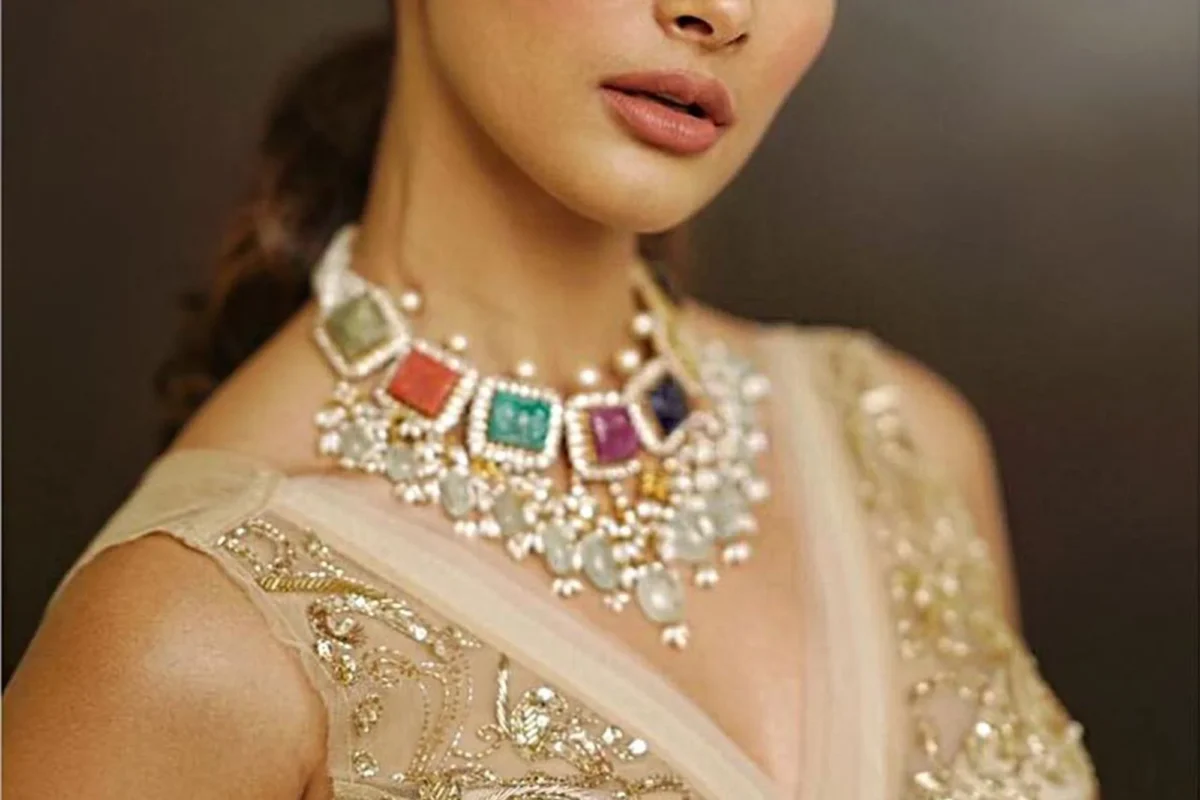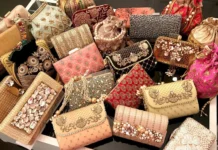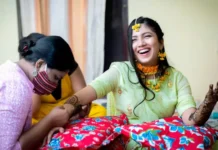Let’s discover the vibrant and magical world of colourful stones so that you can incorporate them into your bridal ensemble!
The minute we hear the words “bridal jewellery”, our imagination wanders off to shining diamonds. These are the ageless symbols of love, prosperity, and sparkle. But Indian brides, being the repositories of their rich heritage and love of grandeur, realise that diamonds are just the beginning of the story. From hot rubies to enigmatic emeralds, otherworldly pearls to foreign sapphires, stones have long been the centre stage of bridal jewellery. Every gem holds a greater significance, a touch of tradition, and a hint of romance, rendering bridal jewellery not ornaments, but tellers of love, heritage, and personality.
In Indian wedding culture, jewellery is not merely a piece of jewellery. It is a component of the bride’s essence, a symbol of her family’s heritage, and a charm she takes with her on her new journey. And though diamonds might always dazzle, it is the rainbow of colored stones that adds depth, uniqueness, and ageless beauty to bridal fashion. Let us venture into the alluring realm of stones that are beyond diamonds in Indian bridal jewellery in this blog created by our team at Wedding Affair.
Rubies – The Jewel of Passion and Royalty
Rubies have been considered the “king of gemstones” for centuries in Indian tradition. Their deep red colour is symbolic of love, power, and wealth. In fact, rubies were reserved only for royalty and aristocrats in India in the past and are usually set in crowns, necklaces, and temple jewellery.
For a bride, rubies bring a hint of royal grandeur. Picture a polki choker with bloodred rubies encircling it, or a matha patti sprinkled with clusters of small rubies—the red richness completes the bride’s sindoor, bridal lehenga, and blaze of her new life. Rubies also bring good luck in marriage, so they are a popular gemstone in sets of bridal jewellery.
Best Paired With: Gold or kundan jewellery, particularly in a Rajasthani or Mughal-inspired look.
Read Also: The Ultimate Guide to Planning a Wedding Dessert Menu
Emeralds – The Stone of Fertility and New Beginnings
Emeralds, in their rich green splendour, represent rebirth, love, and fertility. Ancient texts refer to emeralds as stones that intensify couple harmony, a characteristic which makes them ideal for bridal jewellery. Their dramatic green colour shines magnificently against traditional red bridal clothes, providing contrast that’s both royal and revivifying.
Emerald chokers, chandbalis, or haathphools add brightness and elegance. South Indian brides wear emerald beads stacked with gold for temple jewellery-inspired styles, while Mughal kundan jewellery combines emeralds with uncut diamonds for a regal look.
Ideal Match With: Polki, kundan, and uncut diamond jewellery. Emeralds also look great in fusion styles where modern brides like to make a statement with emerald rings or minimalist studs.
Sapphires – Mystical and Alluring
Though blue sapphires do carry an astrological warning, they remain among the most captivating stones to appear in bridal jewellery. The midnight blue hue of a sapphire conjures mystery, sophistication, and depth. These are the characteristics that many brides are more and more embracing for fresh, untraditional wedding styles.
A sapphire necklace with ivory or pastel bridal gowns creates royal elegance, while sapphire-encrusted bangles or cocktail rings introduce subtle sophistication. Sapphires are also found in soft pink and yellow hues, providing brides with a wide variety of options that break conventions.
Best Paired With: Platinum and white gold settings to highlight their brilliance, or set beside diamonds for a dazzling effect.
Pearls – The Epitome of Elegance
In Hindu tradition, pearls have always represented purity, tranquillity, and divine femininity. From the Nizams of Hyderabad to Maratha queens, pearls have adorned India’s most powerful women’s collections. Pearls are often favoured by brides who desire a soft, ethereal, and timeless appearance.
A pearl rani haar tumbling over a red bridal lehenga is nothing less than stunning. Subtle pearl strings woven together in a passa or maang tikka bring a Mughal flair, with pearl-set nose rings being bridesmaids’ picks for delicate yet dramatic allure.
Best Paired With: Gold and kundan, but pearls also go perfectly with polki to create layered, heirloom-style designs.
Polki and Uncut Diamonds – Raw, Regal Beauty
While technically a diamond, polki is in a class by itself. Derived from Mughal heritage, polki is crafted out of uncut, unpolished diamonds that are not tamed of their raw, natural beauty. Brides love polki jewellery because it speaks of authenticity, heritage, and splendour.
A polki bridal set, studded with rubies, emeralds, or pearls, is a statement of cultural heritage. Nowadays, in bridal trends, polki has crossed generations and finds equal favour with traditional brides and modern brides.
Best Paired With: Heavily embroidered lehengas in jewel tones of maroon, emerald green, and royal blue.
Read Also: 7 Latest Designer Bridal Collection You Need to See
Tanzanite – The Modern Bride’s Stone
Tanzanite, a fairly new gemstone produced exclusively in Tanzania, has stepped into the realm of wedding jewellery with an individualistic charm. Its soft blueviolet colour reflects uniqueness and elegance, ideal for brides looking for something different.
Indian designers have started experimenting with tanzanite in cocktail rings, bridal chokers, and earrings. It is particularly in vogue among brides opting for pastel lehengas in lilac, lavender, or blush.
Best Paired With: Platinum or white gold for a modern bridal style.
Tourmaline – The Multicoloured Gem
Tourmaline is a rainbow trapped within stone. Coming in pink, green, and even watermelon shades, the gem provides brides with plenty of room to get creative. It represents healing, compassion, and joy, which makes it a sentimental wedding jewellery choice.
Tourmaline-encrusted maang tikkas or earrings infuse a contemporary touch to the bridal look. Pastel-hued brides prefer pink or green tourmaline jewellery as a soft, coordinated look.
Best Paired With: Modern gold settings or fusion wedding designs.
Coral – The Ocean’s Talisman
Red and pink corals are inherently part of Indian bridal jewellery culture, especially in Maharashtrian and Rajasthani cultures. Coral is said to be a guardian stone, keeping the bride safe from evil forces when she starts her new life.
A Maharashtrian bride’s moti haar with coral beads is symbolic, and Rajput brides like to include coral in their layered necklaces. Coral bangles or bead strings impart a rustic but strong element to bridal jewellery.
Best Paired With: Traditional gold settings and temple jewellery aesthetics.
Navratna – The Cosmic Blessing
Very possibly the most symbolic of all Indian gemstone jewellery, Navratna jewellery consists of nine precious stones—ruby, emerald, sapphire, diamond, pearl, coral, hessonite, cat’s eye, and yellow sapphire. Together, they symbolise the nine planets in the universe and are thought to confer cosmic equilibrium, prosperity, and divine blessings upon the wearer.
Navratna jewellery is proving to be very popular among brides who are keen to retain the tradition and also seek to be different. The navratna necklace or ring adds colour to the bridal trousseau as well as deep symbolism.
Best Paired With: Bridal outfits of any kind, since the multicoloured stones provide vibrancy and versatility.
Read Also: Contemporary Luxury Watches for Grooms of 2025
While diamonds will last forever, stones impart soul into brides’ jewellery. They provide colour, significance, and tradition to a bride’s accessories. An Indian bride doesn’t only wear jewellery; she wears a legacy, a dream, and a promise. And when she opts for stones other than diamonds, she doesn’t only sparkle; she shines with the glory of century-old traditions, cosmic blessings, and her own story.

